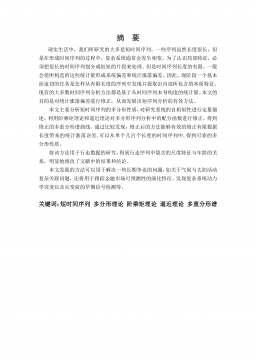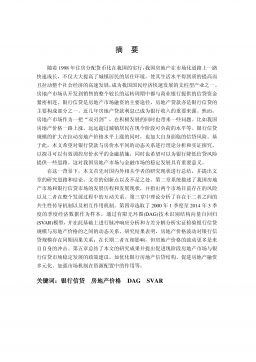构建双金属膜电化学传感器应用于重金属离子的检测
VIP免费
摘 要
随着全球经济的迅速发展,重金属主要通过矿山的开采、化工废水的排放、
生活垃圾的弃置等形式进入水中,造成水体污染。重金属具有毒性大、生物富集、
生物放大效应等特点。水体中的重金属污染引起了社会的高度重视,这使重金属
检测对社会可持续发展有着重大的意义,发展一种快速环保准确的检测方法迫在
眉睫。
电化学分析方法具有设计简单、灵敏度高、成本低、微型化、多元化、多选
择等优点,在化学成分分析中是一种快速准确的痕量分析方法。电化学分析法检
测重金属离子不仅能同时检测多种离子,而且还能将一些非离子性物质转变成离
子性物质后测定。所以在新材料、环境化学、食品化学、生物医药等许多领域应
用广泛。
介孔碳是一种新型的非硅基介孔材料,孔径在 2~50 nm 之间,孔形状多样,
比表面积和孔体积都比较大。另外,介孔碳的导电性和热稳定性好,且化学惰性
佳,常常将其作为电极的修饰材料,以改善被修饰电极的电化学性能和生物兼容
性。
锡的化学性质稳定,导电性良好,金属锡及其大多数化合物无毒。铟的可塑
性强,有延展性。金属铟主要用于制造低熔点合金、轴承合金、半导体、电光源
等的原料,因此其有良好的导电性。所以,这两种金属也逐渐纳入环境友好型材
料的探究中。但铟膜电极反应的电信号不强,因此可以将其与其他材料结合来复
合修饰电极。
鉴于目前重金属离子检测的紧迫感以及探索环境友好型材料的必要性,本研
究结合亲水性介孔碳和一些环保型金属如锡,铟,铋,制造出新型复合材料来进
行重金属离子检测。经过不断的实验摸索,得到两种性能优良的复合材料:锡铅
膜/介孔碳复合材料及铋铟复合材料,并将其用于电极表面修饰,构成复合修饰电
极,用于同时检测环境样品中的重金属 Zn(II)、Cd(II)、Pb(II)等。该研究结果拓
展了介孔碳及新型双金属膜化学修饰电极在重金属检测中的应用。本研究的实验
结果摘要如下:
(1)锡铅膜/介孔碳复合修饰电极的制备及性能研究。该电极是一种环保型电极
对该电极进行的多种表征如 SEM、TEM、接触角、阻抗等显示该电极材料形貌均
一、亲水性好,电子传递能力强等优良性能。亲水性介孔碳的存在加快了电极表
面电子传递的速度,改变了双金属膜沉积的形貌和亲水性,这对之后提高 Cd(II)
的电化学检测信号有着重要的作用。SEM、TEM 及EDS 表征证明了锡铅共沉积
于介孔碳的孔壁表面,大大增加了电极表面的活性位点。锡铅双金属膜与介孔碳
之间的协同作用弥补了彼此的缺点,汇集了各自的优势,很大程度上改善了电极
的电化学性能,成功应用于水样中 Cd(II)的高灵敏检测。
(2)锡铅膜/介孔碳复合电极利用方波伏安法检测痕量 Cd(II)的研究。对实验参
数进行了优化,如 镀膜时缓液的 pH、修饰电极时锡铅的质量比、锡铅的沉积时间、
检测镉时缓液的 pH、Cd(II)的沉积电位及 Cd(II)的沉积时间,找到了最佳实验条
件,得到了较好线性曲线。该方法检出限低、重现性和稳定性较好。在 0 ~140 μg·L-1
的浓度范围内呈良好的线性关系,线性方程为 ip=0.568C0.13,相关系数 R为
0.9996,检出限为 0.36 μg·L-1(信噪比 S/N= 3)。用该种方法测得实际水样河水
中的 Cd 含量为 0.42 μg·L-1,与石墨炉原子吸收法检测结果一致,且回收率均高于
100%,这表明该方法可应用于实际样品中 Cd 的检测,结果可靠准确。
(3)铋铟膜复合电极的制备及性能研究。该双金属膜修饰电极制备过程简单,
且电化学性能优于裸电极、铋膜电极、铟膜电极。通过对该电极进行 SEM、TEM、
EDS、接触角、阻抗等表征,证明了该铋铟膜形貌均一、亲水性良好、复合电极
的表面阻抗小、电子传递效果好。
(4) 铋铟膜复合电极方波伏安法检测痕量的 Zn(II),Cd(II),Pb(II)。测定工作
同样对几种实验参数进行了优化,如 Bi/In 的浓度、Bi/In 的比例、Bi/In 的沉积电
位、Bi/In 的沉积时间、Zn(II),Cd(II),Pb(II)的富集电位及时间。在最佳实验条
件下测得三种金属的线性良好,检出限较低,重现性较好。Zn,Cd,Pb 线性方
程分别为 ipZn=45.24+0.30C, ipCd=1.01+1.06C 和ipPb=1.79+0.17C,相关系数 R均
在0.999 以上,检测限分别为 0.12 μg·L-1,0.033 μg·L-1,0.21 μg·L-1(信噪比 S/N=
3)。该方法对实际水样的检测结果与 ICP-MS 标准法所测得的结果相接近,从而
证明了该方法的实用性,能应用于环境或医疗等领域中的重金属离子的检测。
关键字:双金属膜 锡 铟 化学修饰电极 方波伏安法 重金属检测
ABSTRACT
With the rapid development of global economy, heavy metals in the water
pollution mainly through the mines exploitation, chemical wastewater, garbage
disposal. Heavy metals has the characteristics of high toxicity, bioaccumulation, and
biological amplification effect. Therefore, heavy metal pollution in water bodies
caused great attention of the society, which makes the detection of heavy metals has
great significance to the sustainable development of the society. It’s very urgent to find
a fast and accurate method for the detection of heavy metals.
Electrochemical analysis method has many advantages such as simple design, low
cost, miniaturization, multi-select, diversification, etc. Electrochemical analysis
method is well known for its high speed and accuracy toward trace detection among
chemical analysis methods. As for the detection of heavy metals, electrochemical
analysis method not only has the characteristics of simultaneous detection of several
metals, but also it can transfer non-ionic species to ionic ones for detection. So it is
widely used in many fields such as environmental chemistry, food chemistry,
bio-pharmaceuticals, etc.
Mesoporous carbon (MPC) is a new porous material with pore size ranging from
2 to 50 nm, and multiple hole shape as well as large specific surface area and pore
volume. In addition, MPC is usually used as electrode modification material due to its
excellent conductivity and good thermal stability. It can improve the electrochemical
properties and biological compatibility.
The chemical properties of tin are stable and its conductivity is good. Both tin
element and most of its compounds are non-toxic. Indium has strong plasticity and
good ductility, which is mainly used as the raw materials of bearing alloys,
semiconductors, electric light. These two metals are treated as environmental friendly
materials. However, the reaction signal of In-film electrode is not as strong as the other
metal film electrodes. So in order to improve the reaction signal, the combination with
other materials is considered to modify electrode.
In view of the urgency to analysis heavy metals and the necessity to explore
environmentally friendly materials, new novel composite materials are developed by
combining hydrophilic MPC with some environmentally friendly materals like In, Sn,
and Bi. After continuous experimental exploration, two excellent materials was
developed with perfect performance, Sn-Pb/MPC and Bi-In film. These two novel
composite materials were used to modify electrode surface and simultaneously
detection heavy metals like Zn(II), Cd(II), Pb(II)etc. This study extends the application
of MPC and new metal-film modified electrode in detection of heavy metals. The
abstracts of this study are as follows:
(1) The mainly research is the preparation and properties of tin-lead film /
mesoporous carbon composite electrode. According to the characterization of
bimetallic Sn-Pb/MPC/GCE via SEM, TEM, EDS, the contact angle and the
impedance, Sn-Pb/MPC/GCE displayed uniform morphology, good hydrophilicity,
strong electron transfer ability, which is an environmentally friendly electrode. The
presence of MPC accelerate the electron transfer speed over the electrode surface,
changed the morphology and hydrophilicity of Sn-Pb film, which played a significant
role in the enhancement of the electrochemical signal toward Cd(II). The SEM、TEM
and EDS results indicated the successful deposition of Sn-Pb on MPC surface which
greatly increased the activate sites on electrode surface. The synergistic interaction
between MPC and Sn-Pb film considerably improved the electrochemical properties of
the modified electrode by making up each other’s defect and adding each superiority
together. Sn-Pb/MPC/GCE was successfully applied to detect Cd(II) in river water
with high sensitivity.
(2) Using Sn-Pb/MPC/GCE to detect trace Cd(II) in square wave voltammetry
way, the experimental parameters were optimized in details, including the
concentrations of MPC and Sn(II)/Pb(II)ions, the mass ratio of Sn(II) to Pb(II), the
deposition time of Sn(II)/Pb(II), as well as the preconcentration potential and time of
Cd(II). After all optimal parameters were obtained, good linear relation curver was
received. The newly proposed method shows low detection limit, good reproducibility
and stability. In the concentration range of 0~140 μg·L-1, the linear analytical curve
ip=0.568C0.13 for Cd(II) was achieved with correlation coefficient and detection
limit calculated to be 0.9996 and 0.36 μg·L-1 (S/N=3), respectively. The concentration
of Cd(II) in river water was found to be 0.42 μg·L-1, in accordace with that obtained by
ICP-MS and satisfactory recoveries higher than 100% was obtained. These results
suggest that the proposed method can be applied as a simple, efficient alternative to
monitor the heavy metals in water samples.
(3) This part study was the preparation and properties of the bismuth-indium
film composite electrode. The preparation of this composite electrode was simple
whose electrochemical properties are better than that of bare GCE, Bi/GCE and
In/GCE. The characterizations of SEM、TEM、EDS, contact angle and impedance
indicates that the newly prepared electrode has uniform morphology, good
hydrophilicity, low impedance and high electrode transfer speed.
(4) Using bismuth-indium film composite electrode to detect the trace Zn(II),
Cd(II), Pb(II) in square wave voltammetry way. In this work, several experimental
parameters were optimized including the concentration of In and Bi, the ratio of Bi and
In, deposition potential and deposition time of In and Bi, the deposition potential and
deposition time of Zn(II), Cd(II), Pb(II). Under the optimum experimental conditions,
the linear curves of three metals are good, low limit detection, and the better
reproducibility. The linear analytical curve of Zn(II), Cd(II), Pb(II) were
ipZn=45.24+0.30C, ipCd=1.01+1.06C, ipPb=1.79+0.17C,respectively. The correlation
coefficient of Zn(II), Cd(II), Pb(II) were all above 0.999. The detection limit of Zn(II),
Cd(II), Pb(II) were calculated to be 0.12 μg·L-1,0.033 μg·L-1,0.21 μg·L-1(S/N=3). The
analysis results obtained by the new method are in good aggrement with that by
ICP-MS, indicating the good practicability. The proposed method can be applied as a
simple, efficient alternative to monitor the heavy metals in environmental or medical
treatment samples.
Keywords: bimetallic film, tin, indium, chemical modification, square
wave voltametry, detecton of heavy metals.
目 录
中文摘要
ABSTRACT
第一章 绪论 ................................................................................................................ 1
1.1 重金属污染 ........................................................................................................ 1
1.1.1 重金属污染的现状 .................................................................................... 1
1.1.2 几种常见的重金属及其危害 .................................................................... 2
1.1.3 重金属检测的方法 .................................................................................... 3
1.2 电化学分析法的研究现状及进展 .................................................................... 7
1.2.1 电化学分析法的分类 ................................................................................ 7
1.2.2 电化学分析法的应用及前景 ..................................................................... 9
1.3 化学修饰电极 ................................................................................................. 10
1.3.1 化学修饰电极的研究现状 ....................................................................... 10
1.3.2 化学修饰电极在重金属离子检测中的应用 ........................................... 12
1.4 介孔碳的研究进展 .......................................................................................... 12
1.4.1 介孔碳的研究现状 ................................................................................... 12
1.4.2 介孔碳的应用 ........................................................................................... 13
1.5 研究意义及内容 .............................................................................................. 14
1.5.1 研究意义 .................................................................................................. 14
1.5.2 研究内容 .................................................................................................. 15
第二章 Sn-Pb/介孔碳复合修饰电极的制备 ......................................................... 17
2.1 实验试剂及仪器 ............................................................................................. 17
2.1.1 主要实验仪器与试剂 .............................................................................. 17
2.1.2 溶液的配制 .............................................................................................. 17
2.2 Sn-Pb/介孔碳复合修饰电极的制备 ............................................................... 18
2.3 Sn-Pb/介孔碳复合修饰电极的特性 ............................................................... 18
2.3.1 接触角亲水性的表征 .............................................................................. 18
2.3.2 电化学阻抗 ............................................................................................... 20
2.3.3 透射电子显微镜分析 .............................................................................. 21
2.3.4 X 射线能谱色散仪分析 ....................................................................... 22
2.3.5 扫描电子显微镜分析 ............................................................................... 23
第三章 Sn-Pb/介孔碳复合电极测定 Cd(II) ............................................................ 24
相关推荐
-
七年级数学下册(易错30题专练)(沪教版)-第13章 相交线 平行线(原卷版)VIP免费
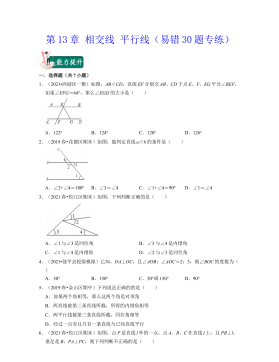
 2024-10-14 25
2024-10-14 25 -
七年级数学下册(易错30题专练)(沪教版)-第13章 相交线 平行线(解析版)VIP免费
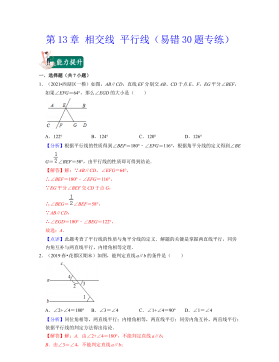
 2024-10-14 28
2024-10-14 28 -
七年级数学下册(易错30题专练)(沪教版)-第12章 实数(原卷版)VIP免费
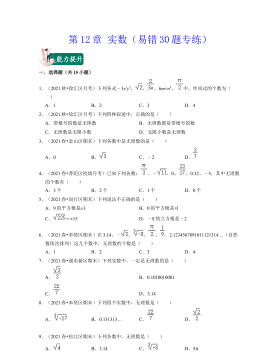
 2024-10-14 25
2024-10-14 25 -
七年级数学下册(易错30题专练)(沪教版)-第12章 实数(解析版)VIP免费
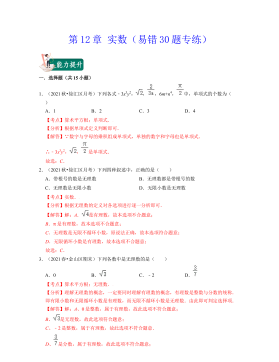
 2024-10-14 19
2024-10-14 19 -
七年级数学下册(压轴30题专练)(沪教版)-第15章平面直角坐标系(原卷版)VIP免费
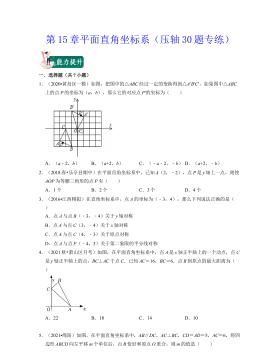
 2024-10-14 18
2024-10-14 18 -
七年级数学下册(压轴30题专练)(沪教版)-第15章平面直角坐标系(解析版)VIP免费

 2024-10-14 27
2024-10-14 27 -
七年级数学下册(压轴30题专练)(沪教版)-第14章三角形(原卷版)VIP免费

 2024-10-14 18
2024-10-14 18 -
七年级数学下册(压轴30题专练)(沪教版)-第14章三角形(解析版)VIP免费

 2024-10-14 30
2024-10-14 30 -
七年级数学下册(压轴30题专练)(沪教版)-第13章 相交线 平行线(原卷版)VIP免费
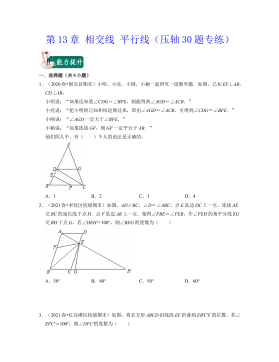
 2024-10-14 25
2024-10-14 25 -
七年级数学下册(压轴30题专练)(沪教版)-第13章 相交线 平行线(解析版)VIP免费
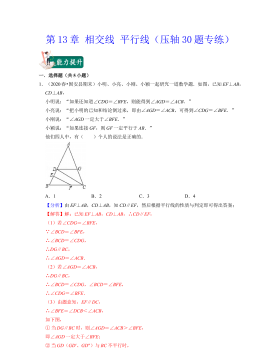
 2024-10-14 22
2024-10-14 22
作者:侯斌
分类:高等教育资料
价格:15积分
属性:71 页
大小:3.69MB
格式:PDF
时间:2025-01-09
相关内容
-

七年级数学下册(压轴30题专练)(沪教版)-第15章平面直角坐标系(原卷版)
分类:中小学教育资料
时间:2024-10-14
标签:无
格式:DOCX
价格:15 积分
-

七年级数学下册(压轴30题专练)(沪教版)-第15章平面直角坐标系(解析版)
分类:中小学教育资料
时间:2024-10-14
标签:无
格式:DOCX
价格:15 积分
-

七年级数学下册(压轴30题专练)(沪教版)-第14章三角形(原卷版)
分类:中小学教育资料
时间:2024-10-14
标签:无
格式:DOCX
价格:15 积分
-

七年级数学下册(压轴30题专练)(沪教版)-第14章三角形(解析版)
分类:中小学教育资料
时间:2024-10-14
标签:无
格式:DOCX
价格:15 积分
-

七年级数学下册(压轴30题专练)(沪教版)-第13章 相交线 平行线(原卷版)
分类:中小学教育资料
时间:2024-10-14
标签:无
格式:DOCX
价格:15 积分


